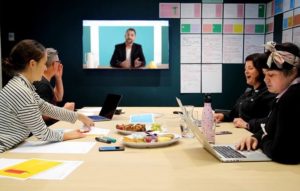
Business leaders tend to be incredibly busy individuals. ‘Busyness’ should never be confused with effectiveness, however. We need to switch from being busy to achieving results.
Assuming you have a clear vision for your business, and have carefully chosen a small handful of strategic projects to focus on this quarter (one to three maximum) – i.e. those actions which will position your firm for future success in your industry – you must ensure that you and your people devote a sufficient percentage of your time each week to work on activities aligned to achieving these project outcomes.
What percentage of time do you spend focusing on strategic projects that will move your business forward? If you take a typical week and track how you actually spend your time every hour, the answer will likely shock you.
Warren Buffet once said, “The difference between successful people and very successful people is that very successful people say NO to almost everything.” Very successful people force themselves to focus on what is strategically important and eliminate everything else.
Peter Drucker recommended that business leaders concentrate on the few things that will produce the greatest results. Do first things first – and second things not at all.
There are always more things to do than there is time available. The changing environment outside your firm is the only area where results occur and that is where leaders need to focus their attention. But pressures always drag you back inside the firm. They drag you into what has happened, over what will happen in the future – the current crisis over the future opportunity – the urgent over the important.
Creating a winning strategy with clear strategic projects is the first step. To do that, you need to employ a disciplined strategic decision making process. However, the execution of strategic projects is still the major challenge for most business leaders, and it often requires a ‘stop doing list’.
Drucker offered the following tips to help you become a more effective business leader:
- Put all activities, products, services, and people regularly ‘on trial for their lives’ and get rid of those activities and people that cannot prove their productivity.
- Do not invest any more resources into activities that are no longer productive – or those that are unlikely to be productive in the future.
- Prune ruthlessly. Yesterday’s successes always linger long beyond their productive life. Cut out activities that have ceased to promise future results. Ask – is this still worth doing?
- Put your best people to work on the opportunities of tomorrow, not fixing the past
- Get rid of everything else so you can focus on the few activities that if done with excellence, will really make a difference in the future. Everyone is already too busy working on the activities of yesterday.
- Have the courage to get rid of an old activity before you start a new one.
It is too easy to keep adding more activities, more projects, more products, more services.
As I often tell clients, effective leaders need to have the courage to ‘prune the rosebush’ – because that is exactly what you must do if you want to create beautiful blooms.
It sounds simple, but simple does not necessarily mean easy. It’s hard to stop doing things we have become attached to. Take a look at your current activities/products / services. What is on your “stop doing list” this year?








